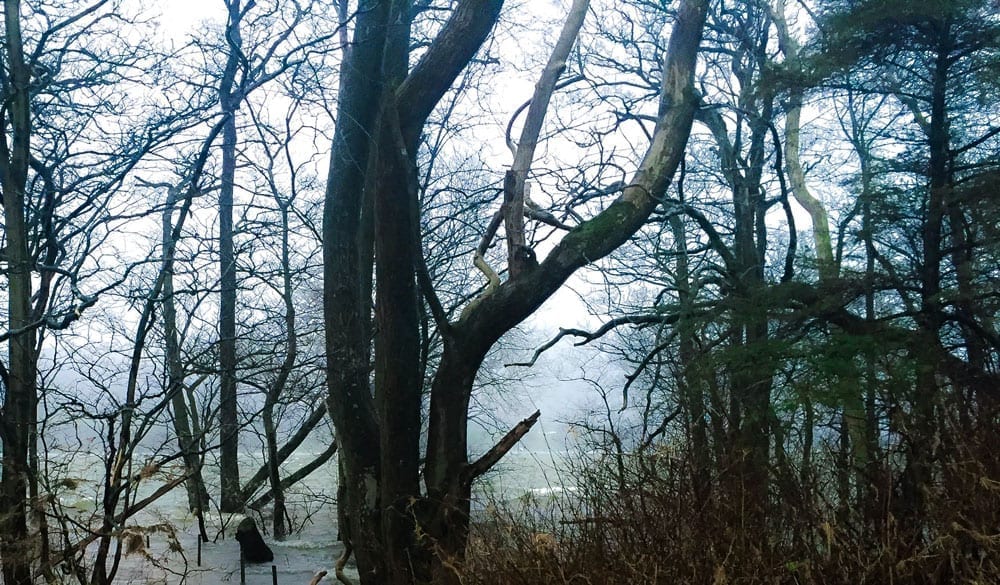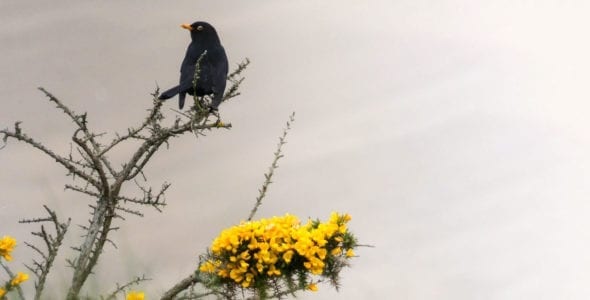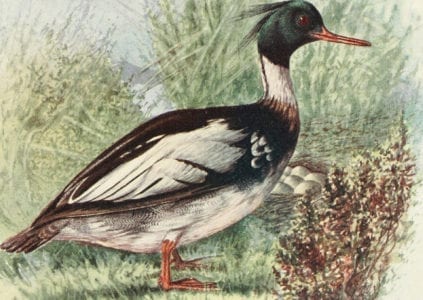New Nature Writing: a force for sustainability and the common good?
Can Nature Writing be a force for saving what we wish to conserve and carry on loving, and to hand on to future generations? Can it be a contribution to the political and social movements for a re-imagination of the good life, of sustainable prosperity? Taking seriously the claims of art to enable us to imagine other futures, CUSP is launching a call for entries for a new nature writing project: Nature Writing for the Common Good. In this blog, Ian Christie and Kate Oakley introduce the NNW genre and outline the concept of our writing project.

Visit almost any bookshop in the UK, even in the heart of a big city, and it is very likely you will find an entire section of shelves full of books about wildlife, the countryside and ‘nature’. The past two decades have seen a boom in nature writing, featuring authors such as Robert Macfarlane, Kathleen Jamie, Helen Macdonald and Mark Cocker. And there has been a rediscovery of classic authors in the natural history, topography and landscape genres—such as the remarkable JA Baker, author of The Peregrine, and Nan Shepherd, author of The Living Mountain. Publishers such as Little Toller Books have reprinted natural history books from the prewar decades and earlier, and others have found an eager audience for new writers on the natural world and rural life. Often the recent literature of natural history and country life is bundled together under the heading of ‘new nature writing’, a term that many, including some writers classified within it, find unsatisfactory (not least because of the condescension to which nature writing has sometimes been subject). All the same, ‘NNW’ serves as a useful shorthand to describe this range of literature, in which many shared tropes, concerns and subjects bind very diverse writers together.
Recurrent themes show up in the New Nature Writing: moving from the city to the countryside; moving back to a childhood countryside; the losses to development in our countryside; the re-wilding of the countryside; the farming life; and the practices and rituals—falconry, dry stone walling and above all, walking. The genre is one that explores the discoveries and changes in consciousness and emotion that accompany close attention to a dwelling place, to a landscape, or to a creature. NNW authors trade in attentiveness and epiphanies, the insights that come from careful observation and immersion in a place and a relationship with the more-than-human.
What accounts for the rise of NNW? Part of the answer must be the nostalgia and longing for the pleasures, peace and comforts of an imagined rural life that appeals to a largely urbanised population. Urban environments associated with stress, ugliness and work generate a desire to ‘escape to the country’, vicariously via reading if not in practice. But the timing of the upsurge in NNW suggests something else is at work. NNW speaks to anxieties about the widespread diagnosis of modern people’s disconnection from the ‘natural world’, anxieties which have only grown as the global environmental crisis has deepened and awareness of loss, extinction and future risk has spread. The rise of the genre coincides with, and may well be a product of, growing anxiety about the degradation of ‘nature’, the looming ‘sixth extinction’ of species and habitats, the spread of pollution, and above all the threat of climate disruption. It can seem as if writers and readers are carrying out a collective stock-taking, an anxious and grief-tinged process of connecting with a more-than-human world whose future is uncertain and whose condition is vulnerable. Amongst other things, NNW can be seen a huge rolling process of documentation of what we have lost, what we love, and what we fear we will lose next.
The question arises: can NNW be a force for saving what we wish to conserve and carry on loving, and to hand on to future generations? Can it be a contribution to the political and social movements for sustainable living and a re-imagination of the good life, of sustainable prosperity? In a recent journal paper written with Jon Ward we explore the potential of NNW as a form of arts activism. In particular, we ask how the genre could be engaged more directly and influentially with the environmental crises of our time, and help generate a collective and popular politics of conservation and connection. In doing this, we’re taking seriously the claims of artistic forms to enable us to imagine other futures, and we suggest that NNW has the potential to play a role in imagining, and helping create and shape, collective initiatives for environmental conservation and renewal.
This is not to say that ’nature writers’ do or should consistently see themselves as activists: some do and some don’t, and the nature, if any, of the political role that nature-writing should play is a subject of debate among NNW practitioners (see for example a notable recent debate in the New Statesman between the prominent NNW authors Robert Macfarlane and Mark Cocker). Nor do the politics of conservation and the laments over the impacts of industrialism on the land translate readily into a clear aesthetic, ethical or political stance. Progressive and conservative values, if not reactionary ones, co-exist and co-evolve in the writing and in the politics of NNW writers as they celebrate, mourn and fear for ‘nature’.
That said, there is a core political challenge for NNW authors whatever their ideological position. The consistent theme of the genre—anxiety and grief about what is being eroded or is likely to be lost, even when it is being celebrated—is fundamental to 21st century environmental politics. How do we stop the damage, what kind of more-than-human world can be conserved, recovered or shaped? This kind of question highlights the challenge of how to mobilise a cooperative political response to the degradation of ecosystems, landscapes and the webs that bind us to creatures of all kinds.
The challenge goes to the heart of the NNW genre as it has developed over recent years, and raises questions about content and about the range of writers engaged. The risk for the NNW genre’s content is that it evades the political challenge of nature conservation and renewal by focusing on by now over-familiar themes—personal epiphanies, lone exploration of a landscape or species, celebration and mourning about the remote places of the British Isles. We don’t disparage these themes, and indeed they are present in the greatest NNW works (and in ‘old’ nature writing). But we do ask if more of the same is going to help in the immense collective task of protection, restoration and renewal needed for the natural world in coming decades. As for the range of authors involved, a wish for more diversity is not the same thing as a rejection of the white male writers who have dominated the scene. It is a recognition that the land, creatures and places we love and seek to protect and revive need the efforts and commitments of every section of society—people from ethnic minorities, people in suburbs and city centres, young people and the old, people in areas of outstanding natural neglect as well as in AONBs.
With this in mind, we are launching a CUSP call for entries for a new nature writing project: Nature Writing for the Common Good. This is aimed at broadening the range of authors and opening up new territories of subject matter, with the political challenges of cooperative action for a better environment and deeper connection with the natural world in mind. It’s launched this month and it will produce a CUSP edited collection of writings by as yet unpublished authors. Watch out for more on the CUSP website and in our social media channels.



